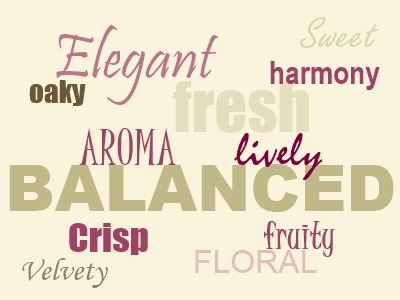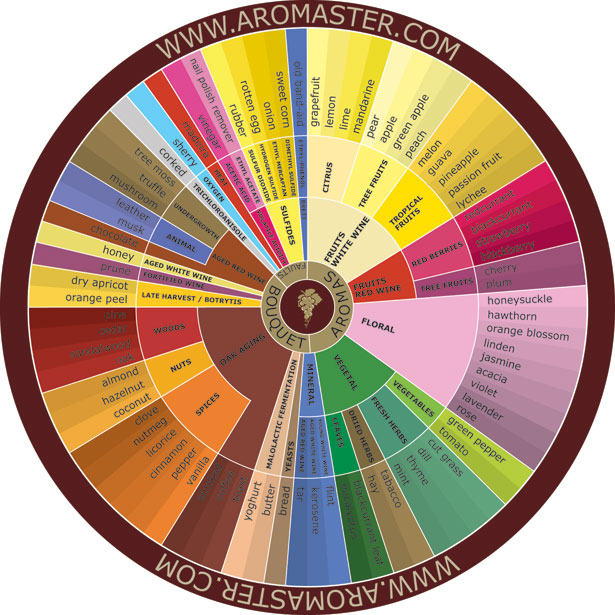Wine Tasting Terms You Should Know
Wine tasting terms give us a common language for describing different qualities of wine. However, unless you come from a family of winemakers or wine aficionados, these words (associated with wine) may seem like a foreign language.
Help is here. Whether you're going to your first wine tasting, or just want a refresher... here are some wine descriptors you'll want to know before you go.
Wine Tasting Terms
Acidity
Acid is a principal taste component of wine that gives it sharpness. Inadequate levels of acidity are described as flat or flabby.
Rising levels, from low to moderate: smooth, soft, supple, fresh, to high: crisp, lively or vibrant.
Excessive acidity is described as tart, green, sharp or biting.

Aroma
The smell of the wine. It is also called nose. Not surprisingly, our most powerful sense can identify a wide range of scents, triggered by memory.
Many adjectives are used for describing a wine's qualities, which come from the grape variety, geographic area where the grapes are grown (each region in Napa Valley is identified by its appellation), and barrel aging.
The wine tasting wheel (shown here) will help you to put words to what you smell. If you're new to this, it may be helpful to think in broad wine tasting terms such as floral or spicy instead of rose or peppery.

Balance
Balance describes how the wine's components (fruit, acidity, tannins and alcohol) relate to each other. Good balance -- also called harmony -- is achieved when there is not an excess or lack of any of these principal components. By the way, there is no such thing as one perfect set of proportions. Grape variety, ripeness and climate play a part in a wine's balance.
Body
Body refers to the weight and texture, determined mostly by the glycerine in a wine. Generally, the darker the color of a wine, the heavier the body.
Bouquet
The collection of aromas that gather in the glass of wine.
Buttery
Buttery is often used to describe oak barrel-aged white wines, such as Chardonnay. This flavor and smooth texture can be attributed to malolactic fermentation.
Complex
A wine with many distinctive aroma and flavor characteristics that set the wine apart. Complexity shows good quality.
Elegant
A complimentary term applied to quality wine with balance, flavor and style.
Finish
This is the aftertaste of a wine you have just swallowed...or spit. Finish can be described as short, medium, long or lingering. Fine wines persist on the palate, the flavors and aromas resonating all the way to the back of the throat.
Oaky
Wine aged in oak barrels pick up the oaky aroma and taste. Oak is an important ingredient for winemakers, adding a toasty, vanilla quality to Chardonnay, Cabernet Sauvignon, Merlot and others. Unfortunately, wines are sometimes overoaked, masking their delicate scents and flavors.
Tannins
Tannins are natural compounds from the skins and seeds of grapes. Very little tannin is found in white wines, but is prominent in reds. Young reds have them in abundance, creating a dry, puckering feel in the mouth and are described as tannic.
Tannins mellow with age and help to give wine structure and balance.
Terroir
Literally "soil" in French, terroir (pronounced tehr-WAHR) refers to the location and climate influence on the wine.
Napa Valley is blessed with rich soil and a warm, sunny climate. Grapes grown here ripen more fully than their French counterparts, often displaying more fruit-forward qualities with lower levels of acidity.
Return to top of Wine Tasting Terms


